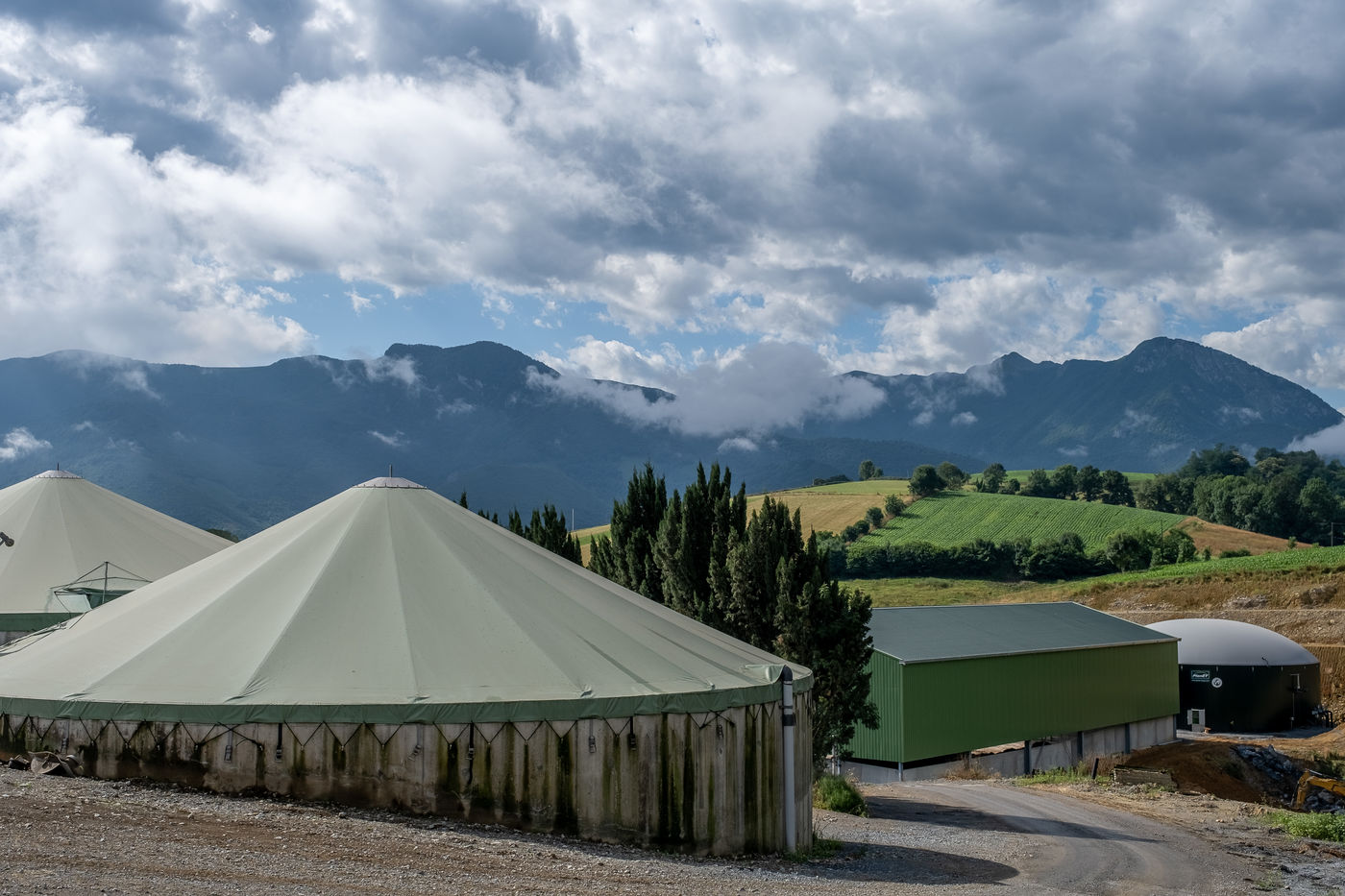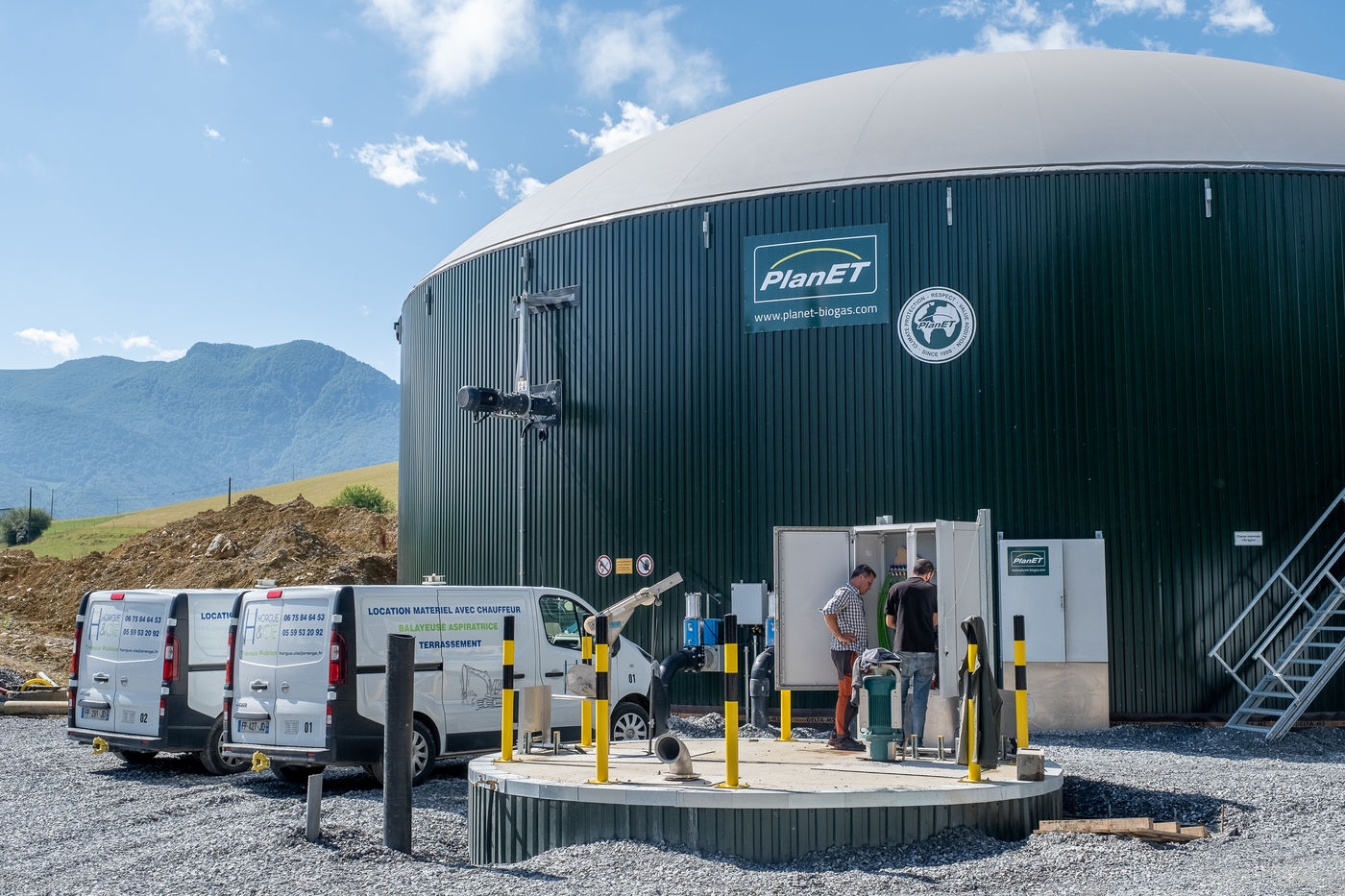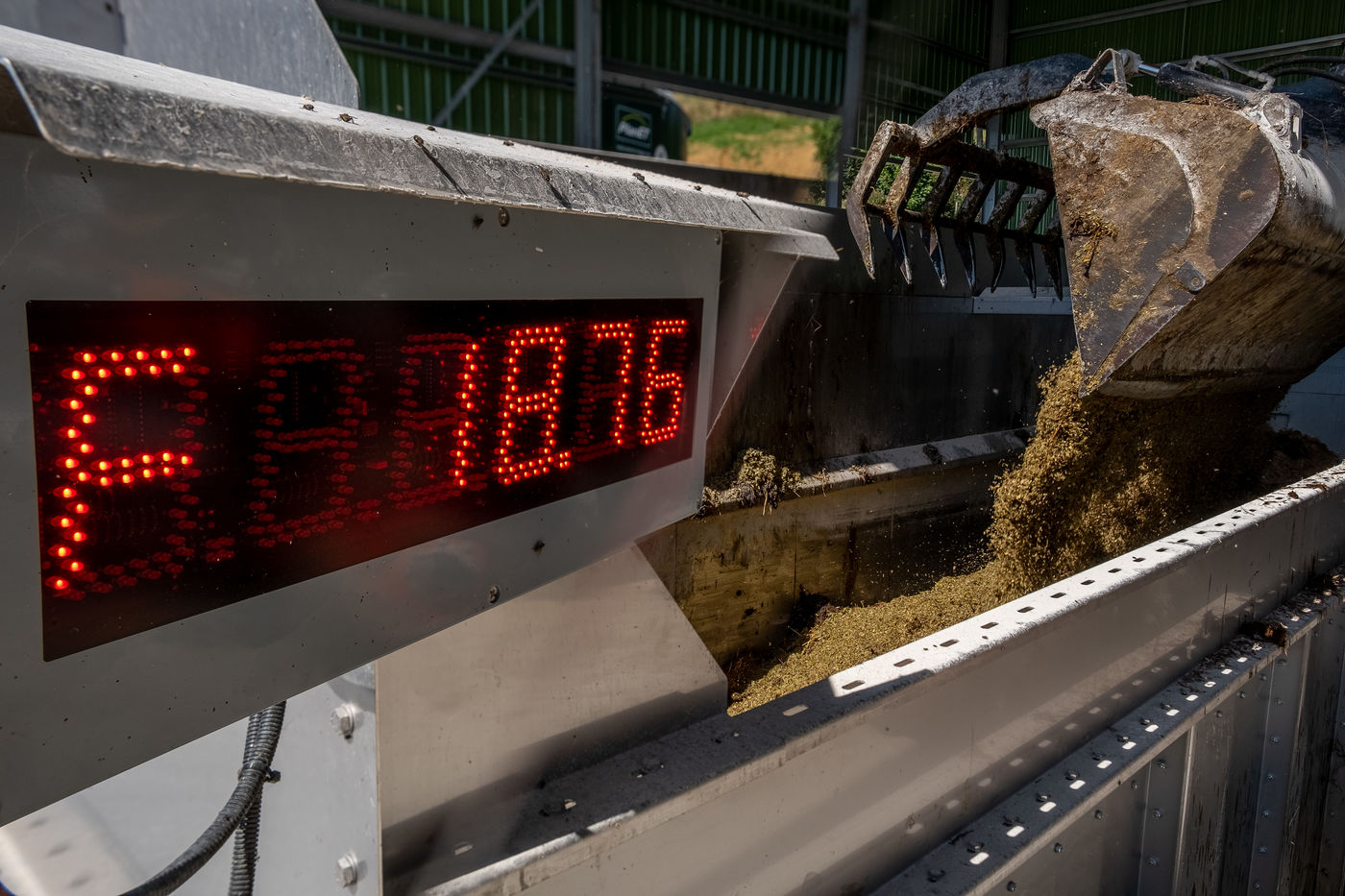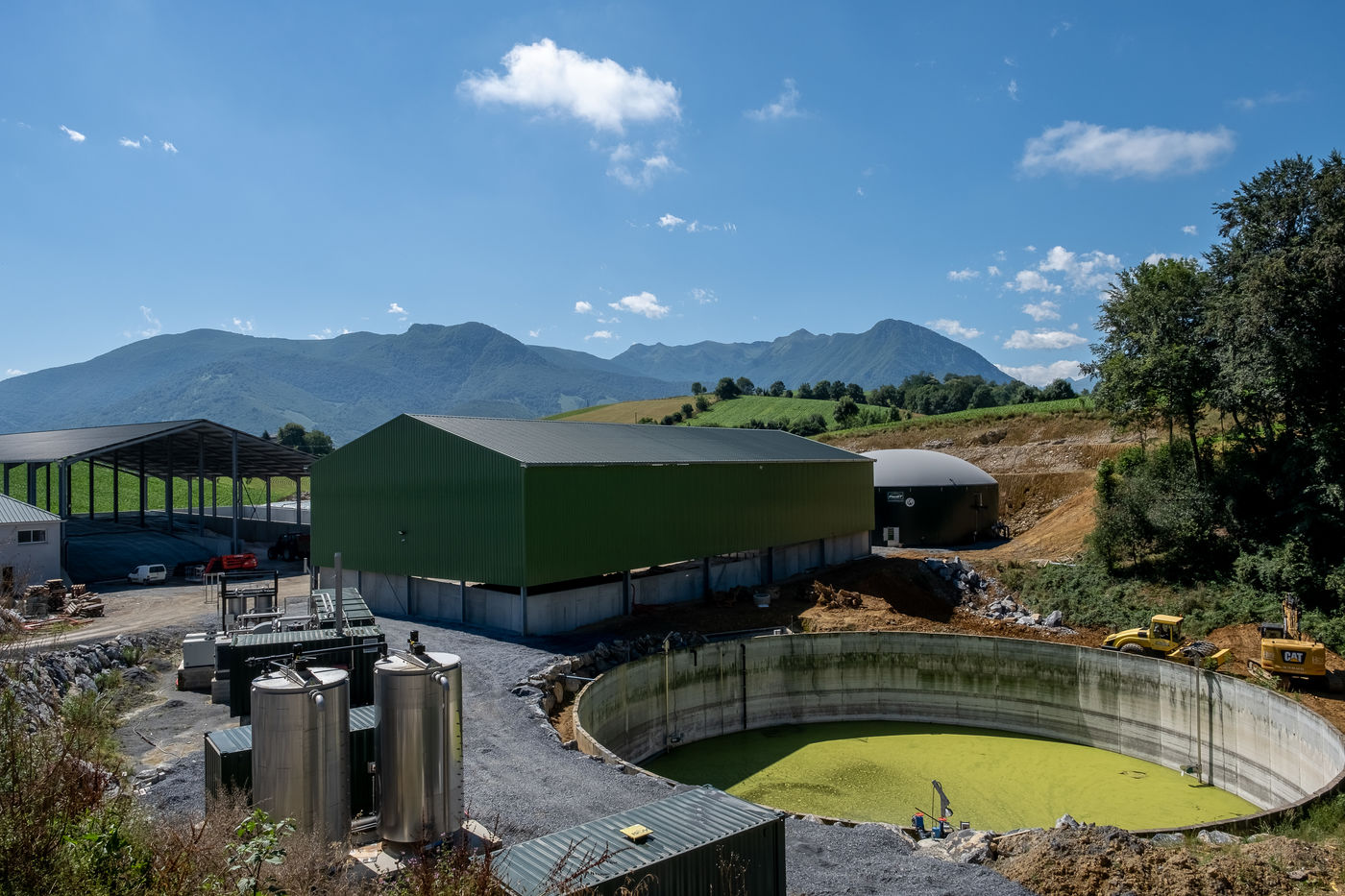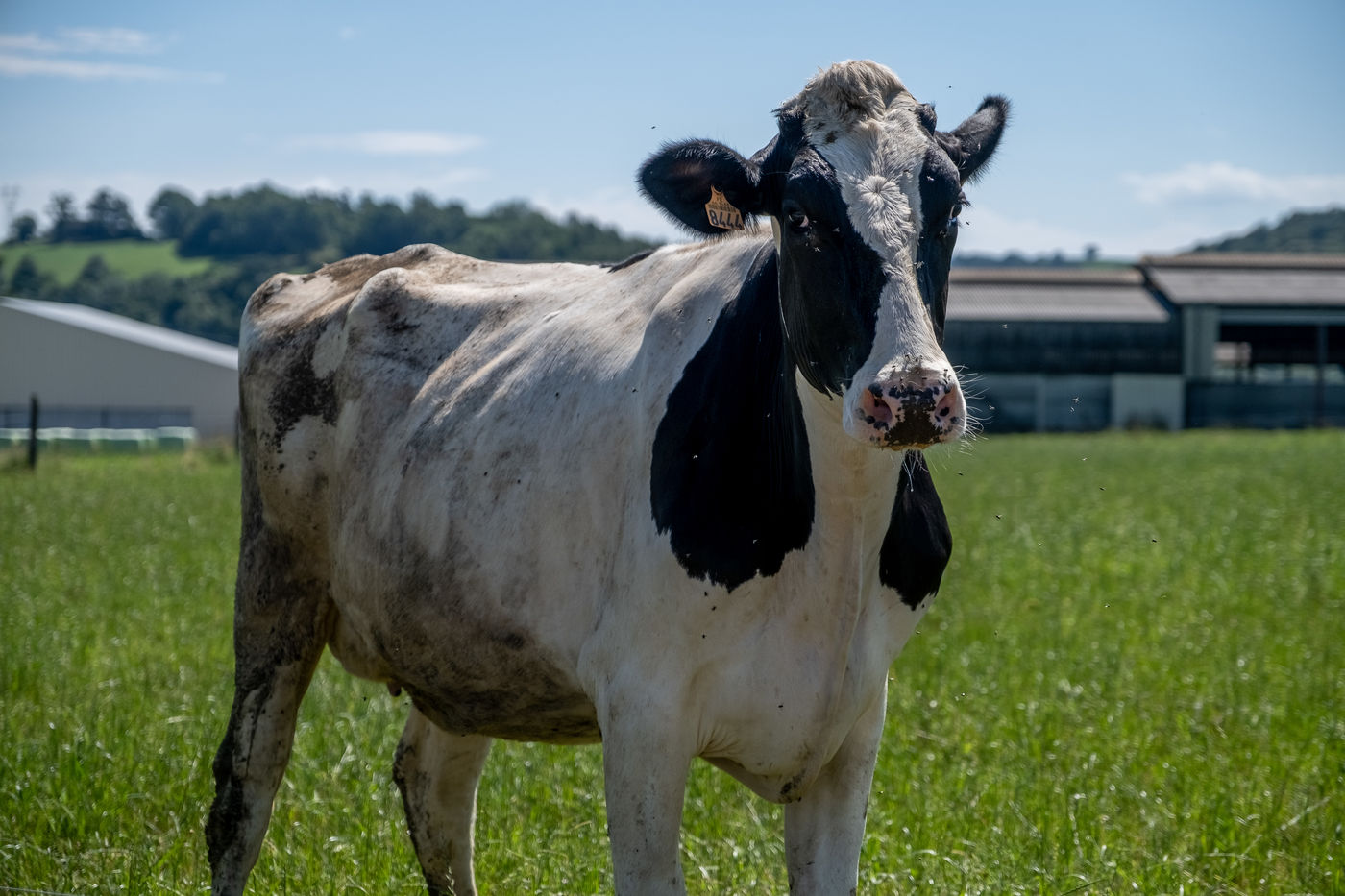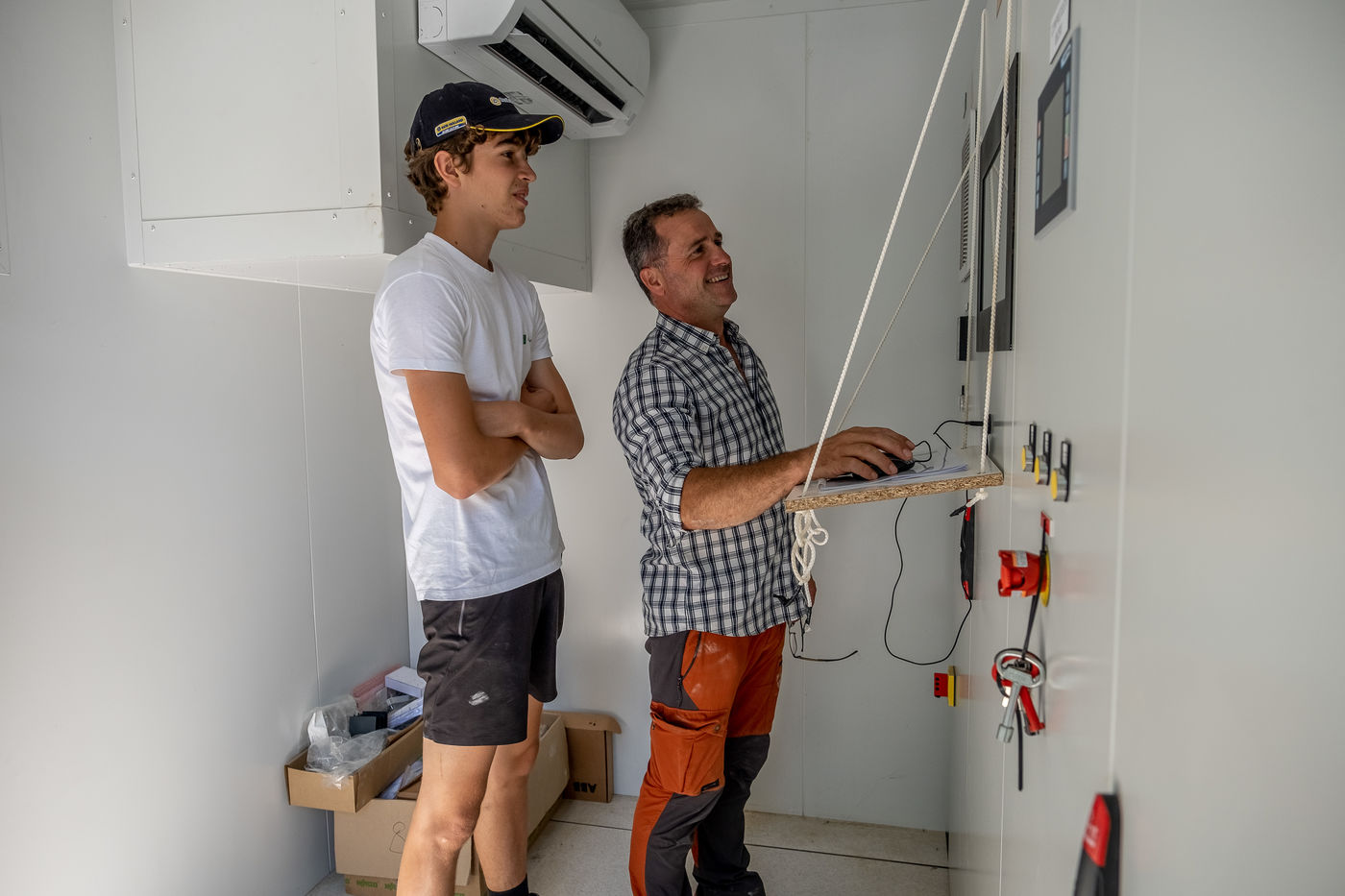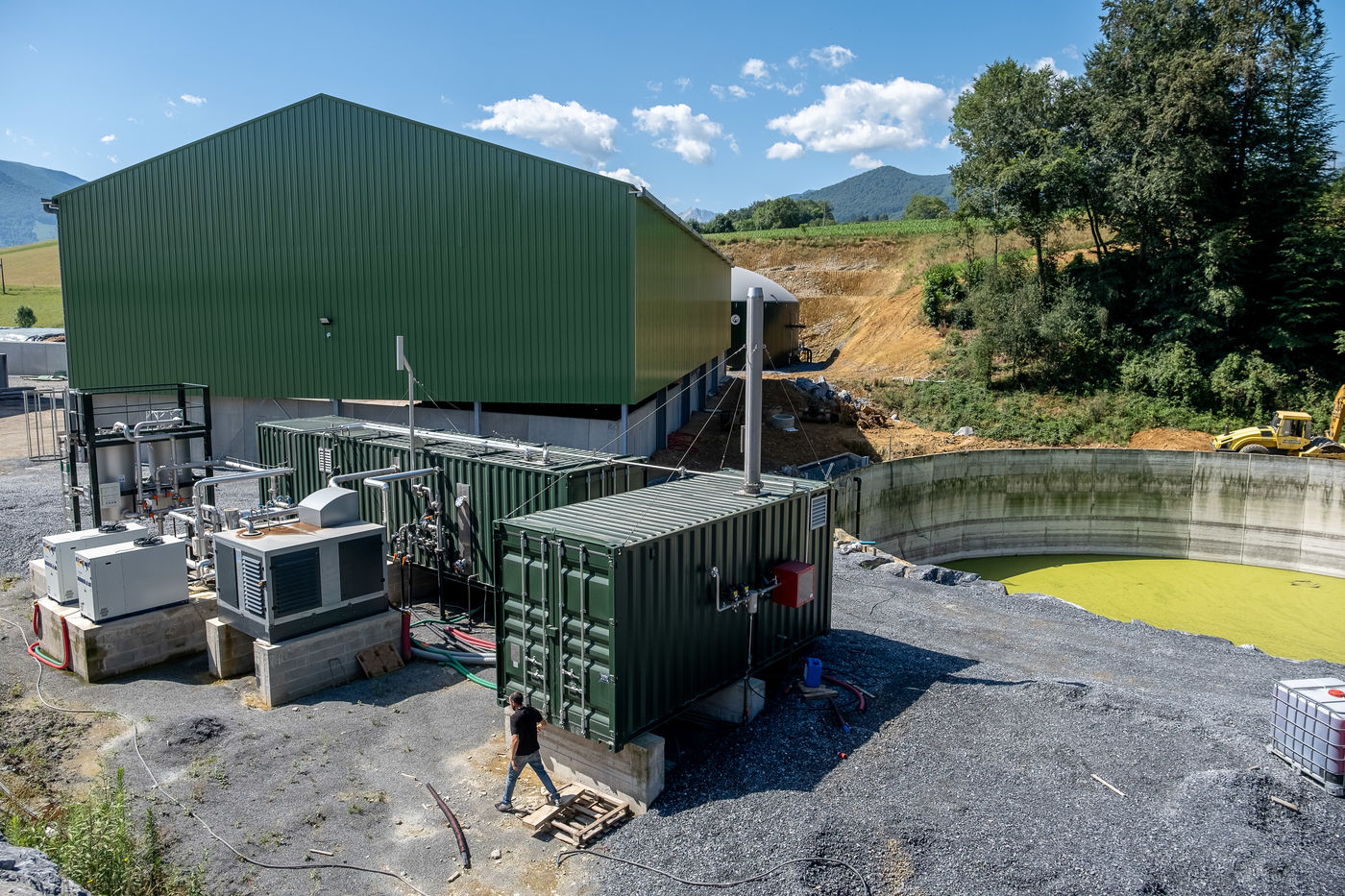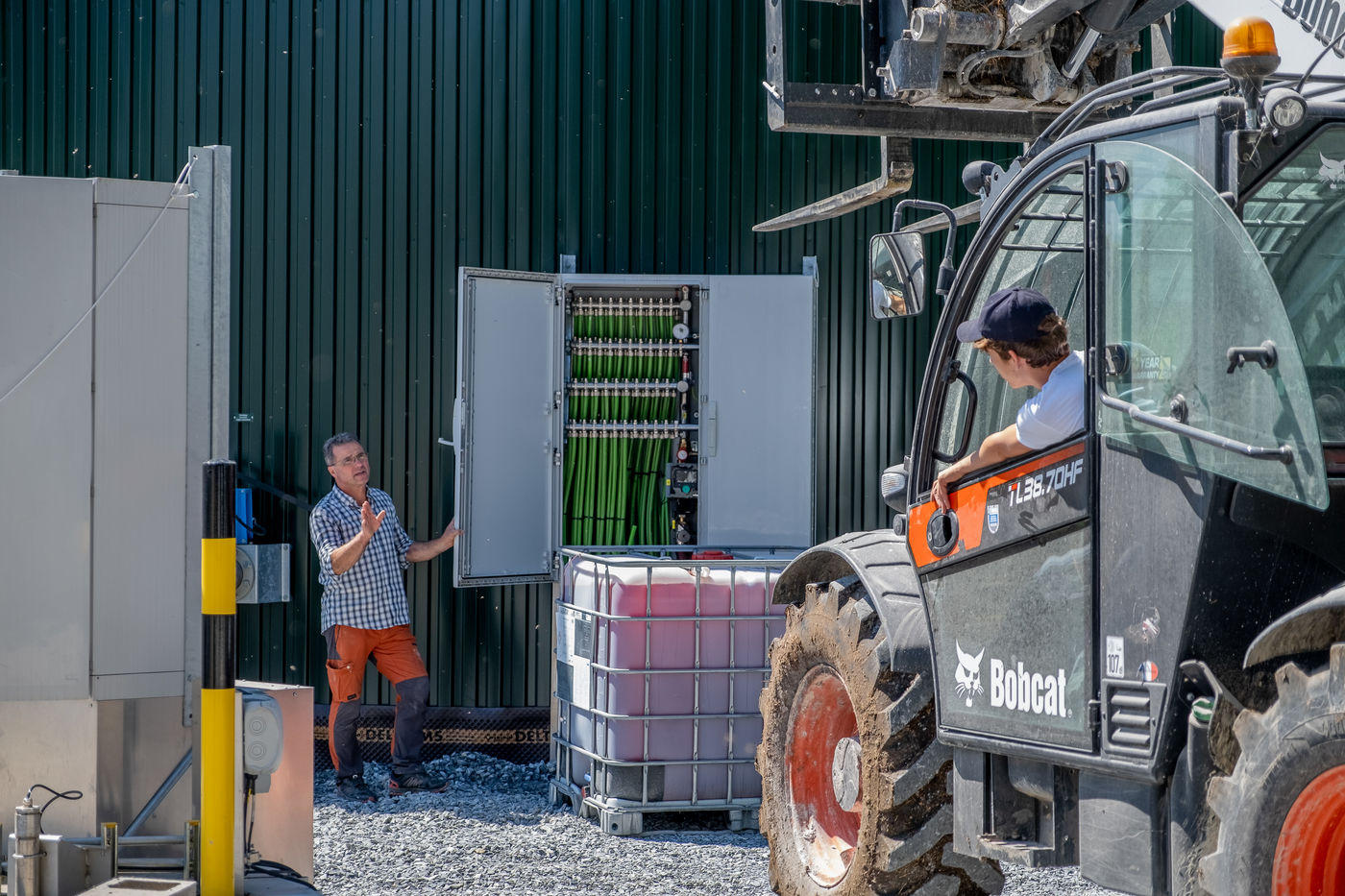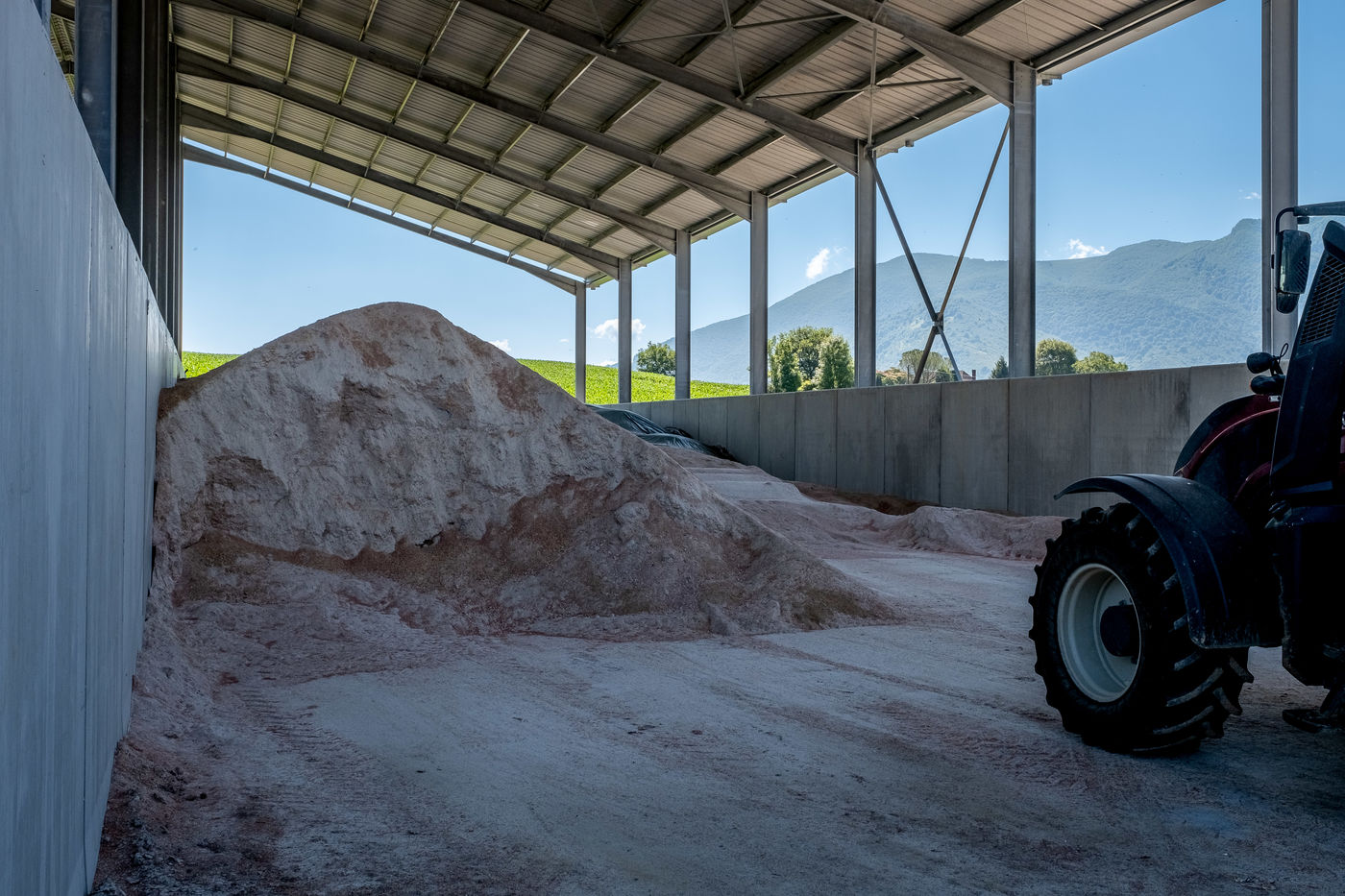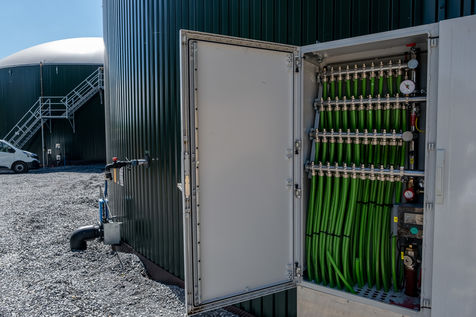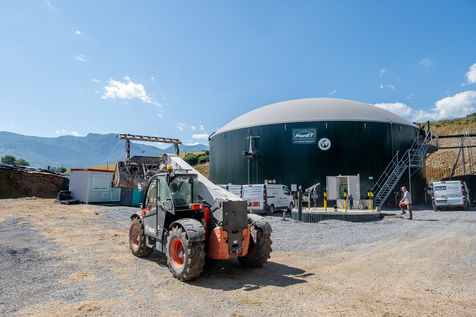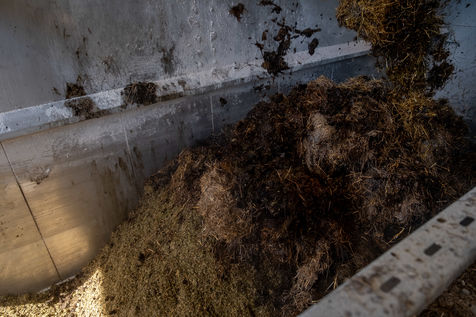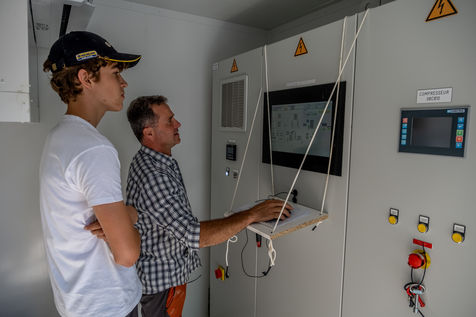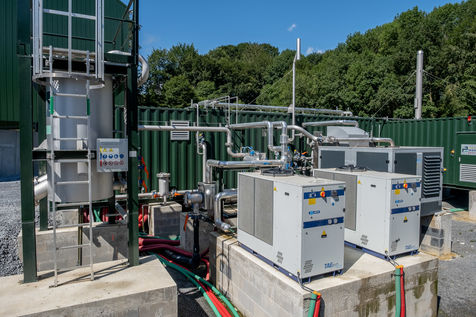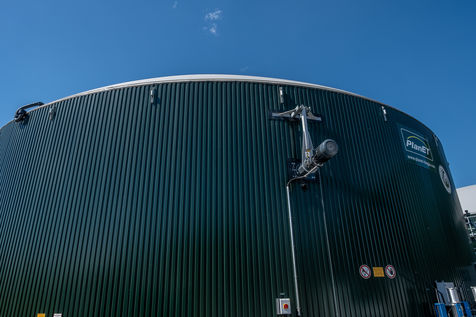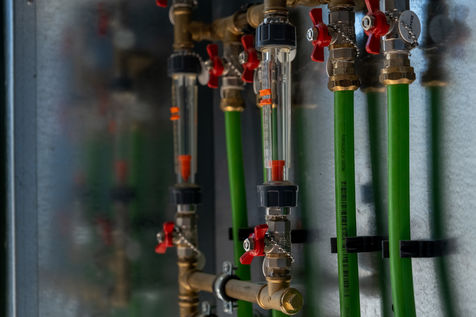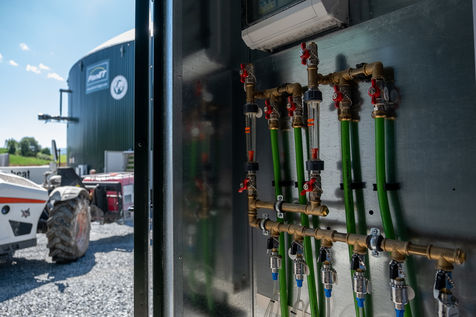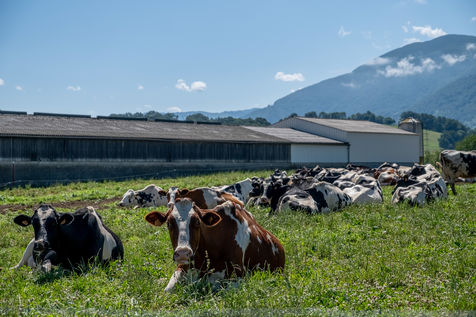Asson Bioénergie
Discrètement logée dans une cuvette entre deux collines, au centre d'une vingtaine d'exploitations agricoles partenaires qui participeront de son succès, l'unité de méthanisation Asson Bioénergie s'inscrit, sinon idéalement, au moins de façon capable dans le paysage rurale et la zone de montagne où elle démarre sa production de biométhane.
Onze agriculteurs exploitant 7 élevages à Asson, associés pour trouver une solution commune au traitement de leurs déchets organiques et participer à une économie plus circulaire et durable, se relaient pour veiller au bon fonctionnement des deux digesteurs - réacteurs chimiques où fermentent des déchets à forte teneur en matière organique. Romain, stagiaire du lycée agricole de Pau-Montardon, alimente les cuves avec un mélange rudimentaire de fumier, d'ensilage de maïs et d'autres cultures intermédiaires à vocation énergétique (cive) provenant des exploitations voisines. Chaque année, ce sont ainsi 30 000 tonnes de matières organiques qui sont transformées, sous l'effet de la chaleur (38 degrés C) en biogaz et digestat. Le digestat, produit en quantité égale (30 000 T), en apportant des nutriments et en contribuant à entretenir l'humification des sols, est utilisé en tant que fertilisant et contribue ainsi au recyclage de biodéchets et au retour au sol des matières organiques promu par l'économie circulaire. Le biogaz, principalement composé de méthane (CH4) et de dioxyde de carbone (CO2) peut être utilisé comme combustible dans une chaudière pour produire de la chaleur, alimenter un moteur pour fabriquer de l'électricité, ou bien, comme c'est le cas à Asson Bioénergie, être purifié et injecté dans le réseau de gaz naturel : on parle alors de biométhane, une énergie locale et renouvelable.
Asson bioenergy
Ideally located between two hills, in the middle of associated agricultural exploitations that will help feed its production, the methanisation unit
Asson Bioénergie has began turning bio-waste into methane bio gas in the spring.
The unit is run by the association of 11 farmers wanting to find a common solution for the disposal of their farms' organic waste and eager to take part in a more circular economy. They now take turns to make sure the two digesters, where the organic wastes ferment, are running smoothly. Romain, a young intern from Pau-Montardon agricultural college is feeding the tanks with a simple mix of manure, corn silage and other intermediate energy crops from neighboring farms. Each year, by the action of heat, 30 000 tons of organic waste are transformed into biogas and digestate. An equal amount (30 000 tons) of digestate can then be used as a fertilizer, through soil nourrishment and humification, contributing to the recycling of the organic waste promoted by circular economy. The biogas, composed of methane (CH4) and carbon dioxyde (C02) can either be used as direct fuel, fuel for electricity production or, as it is the case in
Asson Bionérgie, be purified and fed into a gas distribution system as biomethane, a renewable and local energy.
